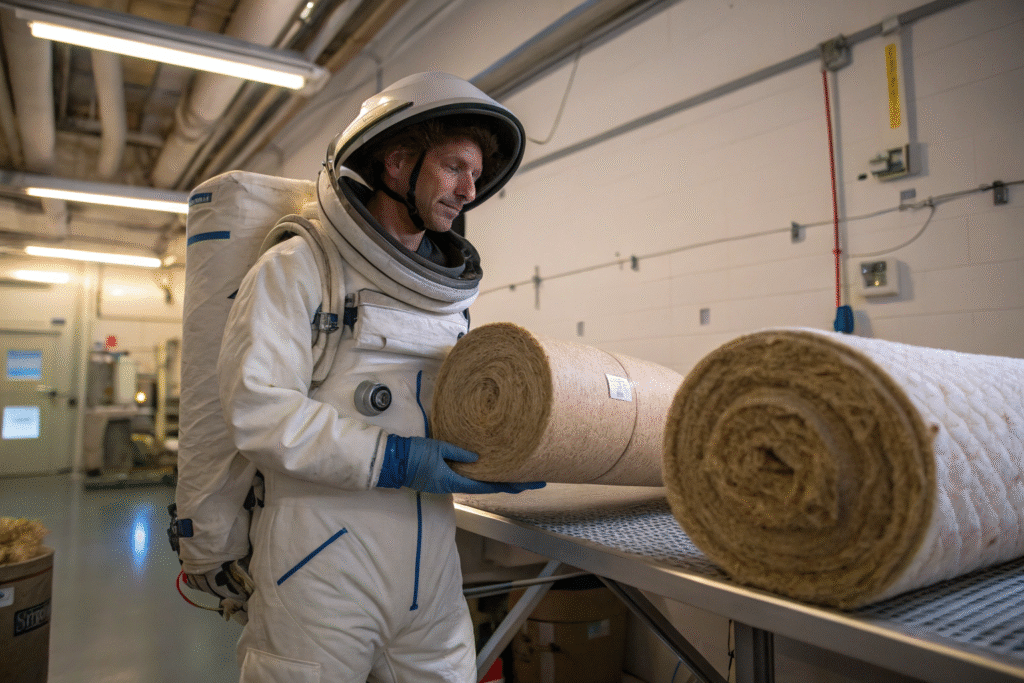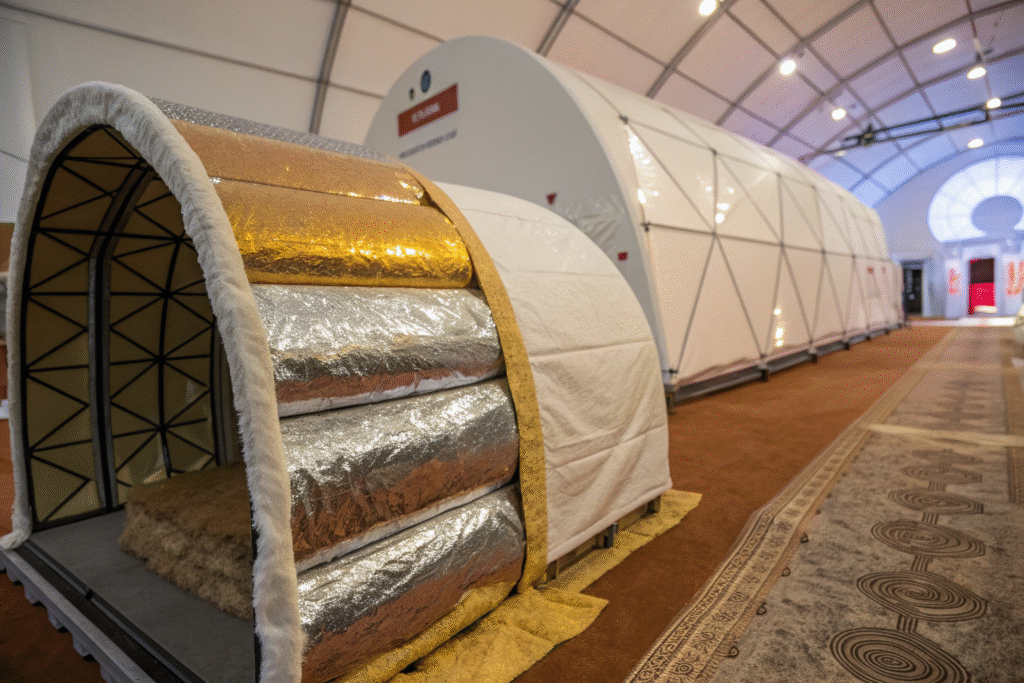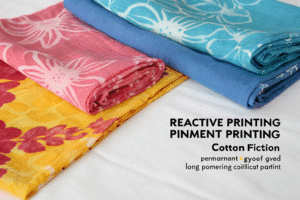When we imagine life on Mars, one of the biggest challenges is not oxygen or food but radiation. Mars has no thick atmosphere or magnetic field to block cosmic rays and solar storms, which means any long-term habitat must include strong protection. Without it, astronauts would face serious health risks from cancer to organ damage.
The best fabrics for Mars radiation shielding are those that combine lightweight strength with high hydrogen content, such as polyethylene-based textiles, advanced aramid fibers, and multi-layer composites that integrate natural fibers with metalized coatings.
If we want to build sustainable habitats, we must think beyond traditional construction. Fabrics could play a key role in making flexible, deployable, and efficient shielding solutions. They are lighter to transport, easier to assemble, and can be engineered with multiple protective layers.
Why Fabrics for Space Radiation Protection?
The dangers of cosmic radiation are well known, but traditional shielding like lead or steel is far too heavy to ship to Mars. Fabrics solve this issue with lightweight strength and adaptability.
Fabrics such as polyethylene and aramid blends can block high-energy protons and cosmic rays more effectively per unit of weight than metals. This makes them a prime candidate for habitat design.

Can Polyethylene-Based Textiles Block Radiation?
Polyethylene, a polymer rich in hydrogen, is one of the most effective radiation barriers because hydrogen atoms scatter incoming particles. High-density polyethylene (HDPE) has already been tested on the International Space Station. NASA even studied its use for space radiation shielding. When woven into textiles, it combines protection with flexibility. Another potential is UHMWPE fibers like Dyneema, which are stronger than steel and excellent for both radiation protection and micrometeoroid resistance.
Are Aramid Fibers Like Kevlar Useful on Mars?
Aramid fibers, known commercially as Kevlar, are already used in spacecraft for impact protection. While they are less effective against radiation compared to polyethylene, they excel in structural strength. A hybrid system could combine Kevlar layers with polyethylene films, providing both mechanical durability and shielding power. Some research suggests aramid fibers could be enhanced with hydrogen-rich coatings to improve their radiation-blocking performance.
How Can Natural Fibers Support Radiation Shielding?
While synthetic polymers dominate discussions, natural fibers could also play a role. Hemp, cotton, and silk are abundant, flexible, and sustainable.
By coating or laminating natural fibers with radiation-resistant polymers, we could create hybrid fabrics that combine eco-friendliness with protective qualities.

Could Hemp Fabrics Be Reinforced for Space?
Hemp is a strong and renewable plant-based fiber. When combined with bioplastics or treated with metal oxides, hemp fabrics could become part of Mars habitat walls. They would not block as much radiation as polyethylene, but they could add structural reinforcement, insulation, and sustainability to habitat design.
Can Silk or Cotton Be Useful in Radiation Barriers?
Silk, due to its high tensile strength, can be engineered into advanced composites. Cotton, though basic, could be impregnated with polyethylene or carbon nanotube coatings to enhance shielding. A layered system might use natural fibers as inner layers for comfort and insulation, while synthetic polymers handle most of the radiation load. The European Space Agency has already investigated natural-synthetic hybrids for aerospace applications.
What Role Do Coated and Laminated Fabrics Play?
Radiation shielding is rarely about one material alone. It is usually about layers. Coated fabrics can integrate reflective, absorptive, and structural properties.
Multi-layer laminated fabrics that combine polyethylene, aramid, and metallic films could deliver the best all-around protection for Mars habitats.

How Effective Are Metalized Coatings?
Thin films of aluminum or other metals can reflect solar radiation. When bonded to fabrics, they help block ultraviolet and particle radiation. For example, NASA’s Nextel ceramic fabrics are already used in spacecraft protection systems. On Mars, a laminated textile with alternating polymer and metalized layers could stop different types of radiation more effectively.
Can Multi-Layer Laminates Replace Heavy Walls?
A fabric wall with alternating layers—polyethylene, aramid, natural fiber, and reflective foil—could act like a flexible radiation shield. This modularity would allow habitats to be deployed quickly and repaired easily. Studies in radiation-hardened composites show that even thin flexible sheets can perform comparably to rigid blocks, making this approach highly practical for Mars.
What About Future Smart Fabrics for Mars Habitats?
Looking ahead, fabric technology could go beyond passive shielding. Smart textiles may monitor, adapt, and repair themselves.
The future of Mars fabrics could be nanotech-driven textiles that change properties in response to radiation, heat, or pressure.

Could Self-Healing Fabrics Be a Solution?
Self-healing polymers that close small tears automatically could reduce risks from micrometeoroids or habitat stress. When combined with radiation-absorbing additives, they would give astronauts safer and longer-lasting shelters. Research in self-healing composites shows promising early results.
Are Nanomaterials the Key to Ultimate Protection?
Nanomaterials like carbon nanotubes and graphene can be embedded into fabrics to enhance strength and shielding. Graphene, in particular, has unique properties for both mechanical reinforcement and radiation protection. The Graphene Flagship project in Europe has already highlighted aerospace applications. While still experimental, these futuristic fabrics could be essential for long-term Mars colonization.
Conclusion
Fabrics may seem soft and fragile, but on Mars, they could be the backbone of survival. By combining hydrogen-rich polymers like polyethylene, strong aramids like Kevlar, sustainable natural fibers, and innovative coatings or nanomaterials, we can design fabrics that are both lightweight and highly protective against radiation.
As we move closer to human missions to Mars, the textile industry has a chance to contribute to space exploration in ways never imagined before. What we weave here on Earth may one day shield humanity among the red sands of Mars.










